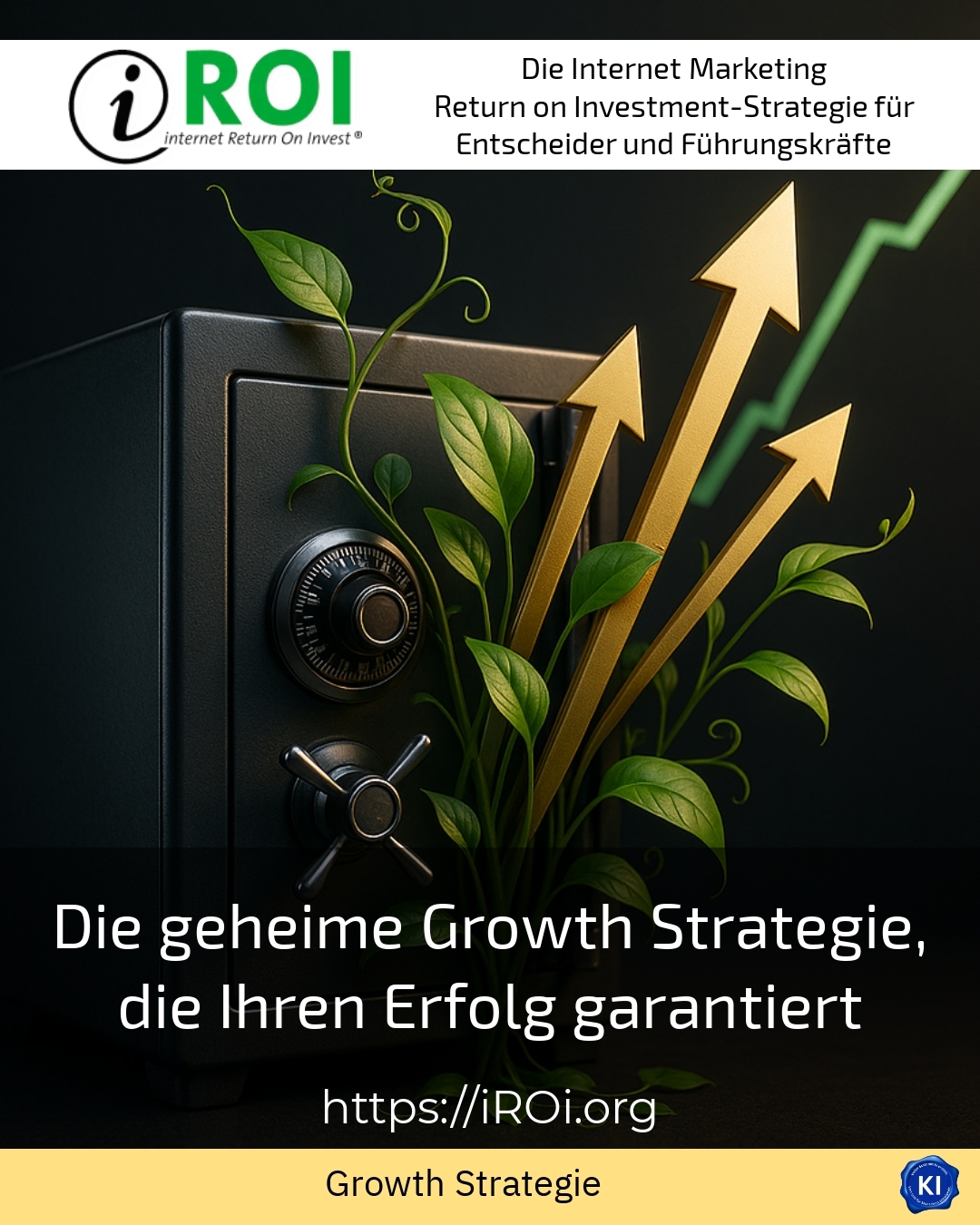The **Growth Strategy** is a key driver for the sustainable success of modern companies. It provides impetus to support growth in a targeted manner and to extend the competitive edge. Those who take a close look at it open doors to improved market opportunities and long-term stability.
What does growth strategy mean in practice?
A **growth strategy** focusses on the future growth of companies or projects. It focuses not only on current successes, but above all on the continuous development of new markets and customer segments. The importance of a well thought-out growth strategy is particularly evident in dynamic sectors such as technology, renewable energies or digital services.
An example from the IT sector illustrates this: A company makes targeted investments in new software solutions and at the same time promotes customer loyalty through personalised services. This not only results in a short-term increase in sales, but above all creates a sustainable basis for future growth.
Similar patterns can be seen in the retail sector. There, committed companies are focussing on omnichannel marketing and creating new sales potential by seamlessly linking online and offline channels. These steps form an essential part of the growth strategy by conveying a holistic growth logic.
A third industry that benefits greatly from a clear growth strategy is the healthcare sector. Hospitals and practices are improving their processes, integrating digital tools and expanding their range of services in order to fulfil patient needs even better. In this way, they ensure their competitiveness in an increasingly demanding environment.
The key components of a successful growth strategy
The implementation of a growth strategy requires clear objectives, constant analysis and flexible adjustments. The most important building blocks are
- Market and competition analysis in order to recognise potential and risks at an early stage.
- Promoting innovation, for example through product development or process optimisation.
- Customer orientation that goes beyond pure product quality, for example through targeted service offerings.
- Digitalisation as a lever to increase efficiency and open up new sales channels.
BEST PRACTICE with one customer (name hidden due to NDA contract) The client implemented a growth strategy focussing on digital marketing measures and target group-specific content offers. This led to an increase in organic traffic of 60 % and significantly increased the conversion rate within a year.
Companies in the mechanical engineering sector also benefit when they expand their sales structure internationally and at the same time increasingly focus on a data-driven customer approach. This enables growth opportunities to be identified and utilised in a targeted manner.
Growth in established sectors through targeted measures
In traditional sectors such as the automotive industry, a precise growth strategy often involves expanding the product portfolio or investing in new technologies. Research and development are seen as an investment in future areas of success. The transformation towards e-mobility, for example, is a central element.
The retail sector often shows how service innovations and improved logistics can be used to automate processes and make them more customer-friendly. These approaches combine efficiency with increased customer satisfaction and are an integral part of a well thought-out growth strategy.
In the financial services sector, digital platforms are being used to address new customer segments. A practical example: online banking apps are being supplemented with personalised functions, thereby achieving greater customer loyalty and growth at the same time.
Practical tips for implementing a growth strategy
The following steps are helpful for implementing the growth strategy in the company:
- Define goals: What growth figures should be achieved? Which markets or customer groups are in focus?
- Analyse resources: What capacities and competences are available, and where is investment needed?
- Use agile methods: Flexible processes allow quick adjustments to market changes.
- Promote communication: An open dialogue strengthens the commitment of employees.
- Measuring success: Data-based key figures show progress and enable targeted control.
BEST PRACTICE with one customer (name hidden due to NDA contract) A start-up in the renewable energy sector used a customised growth strategy and was able to triple its new customer rate within six months thanks to targeted collaborations and digital sales channels. The success was based on a clear focus and continuous optimisation of processes.
The creative industries also show how structured growth approaches have attracted new cooperation partners and increased market reach. Product development and marketing were closely interlinked, which enabled fast learning cycles.
Growth strategy as a sustainable companion to success
A consistently implemented growth strategy helps companies to maintain their position on the market in the long term. Thanks to continuous innovation and adaptation, new business areas are created that constantly promote growth. The aim is not just to seek short-term effects, but to create sustainable value.
BEST PRACTICE with one customer (name hidden due to NDA contract) A medium-sized industrial company established a growth strategy that structured internal innovation processes and accelerated product development. The result was annual sales growth of over 15 % and the development of three new markets.
Non-profit organisations can also benefit from growth strategies by increasing their reach on social media and thus gaining more supporters. This not only strengthens their impact, but also their financial base.
My analysis
The **Growth Strategy** is more than just a buzzword: it is a versatile tool for supporting growth in a wide range of industries. It unfolds its power through structured planning, regular measurement of success and the willingness to constantly develop further. Companies that take these principles to heart often report sustainable success and benefit from a robust competitive position.
Further links from the text above:
Growth strategy - explanation & meaning
SEO growth strategy in 7 steps
Value and growth
Organic Growth: Strategies for visibility & reach
Growth strategy - Stock market encyclopaedia
SEO optimisation 2025 - your guide to more growth
Value vs. growth - substance vs. growth
With 5 SEO growth hacks to number one on Google
For more information and if you have any questions, please contact Contact us or read more blog posts on the topic internet Return on Investment - Marketing here.
















